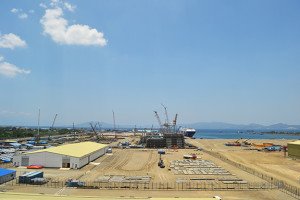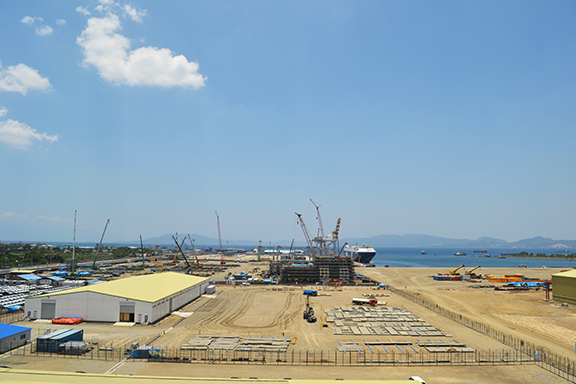
The Philippine government has two policy options that could boost utilization of the Batangas and Subic ports, according to a recent government study.
These are to adopt a policy prescribing fines and price discounts, or to restrict volume, Philippine Institute for Development Studies (PIDS) said in a just-released discussion paper entitled “A System-wide Study of the Logistics Industry in the Greater Capital Region”.
If the desired result is to improve utilization at both ports, the study said, “the more effective policy is the latter,” but if the goal is to decongest the Manila Ports, “then an efficient pricing and penalty mechanism will have to be established.”
Incentives-oriented policy
PIDS said the first approach attempts to divert usage to a targeted port through pricing incentives, while the second encourages utilization of a targeted port through quantity restrictions at the frequently used port. Each of these approaches can potentially optimize utilization of the ports, depending on how fees are set and how quantity limits are determined, it added.
But if the price and fee perks are not enough to compensate for the other service strengths of the most frequently used port, the study pointed out, “shippers and other port users would not respond favorably to the incentives.”
The government, through the Philippine Economic Zone Authority (PEZA), has actually been trying for years to encourage shippers to use Batangas port, dangling a 50% discount on the processing fees for full-container shipments discharged or loaded at the Southern Luzon hub. These incentives are targeted at PEZA locators set up in the Calabarzon (Cavite, Laguna, Batangas, Rizal and Quezon) area, those in the hinterland, and in places where the target shippers of Batangas port are located.
Moreover, the government in the middle of last year reduced by 90% the harbor and berthing fees for carriers docking at Subic and Batangas ports. After March 31, the discount will be lowered to 50%.
Preference for Manila
The PIDS study found most shippers and consignees still preferred Manila ports due to the many shipping lines that service it, availability of service providers, reliability of shipping schedule, accessibility, and efficiency of cargo acceptance or release.
“Thus, the proximity of shippers to the Batangas Port is not enough to offset the other benefits of using the Manila ports. Neither is the affordability of port-related services a major consideration,” it pointed out.
The study also showed shippers and consignees are the ones who choose which port to call. This means the final government option that needs to be adopted has to appeal to both these decision makers.
Truckers, on the other hand, prefer Manila ports because of proximity to their garages and points of destination.
Based on survey results, the study said that if port users are unresponsive to price incentives, the most appropriate approach favors quantity restriction.
“Volume restriction is relatively more effective than price incentives in diverting traffic to Batangas and Subic Ports,” said the report.
Not mutually exclusive
At the same time, it said the two policy options are not necessarily mutually exclusive. The study pointed out that in the aftermath of the Manila truck ban implementation in Feb 2014, restricting volume through ad-hoc and uncoordinated pricing discounts and fines implemented by various government agencies had “barely visible” effects on increasing utilization at Subic and Batangas Ports, or on decongesting the Manila ports.
Whichever option is selected though, the study noted that if the cargo volume is transferred “to an underutilized port with limited capacity, the ultimate result will just be to transfer the port congestion problem.”
To avoid this, “a policy of expanding capacity ahead of demand in Batangas and Subic Ports must form part of the policy package to divert volume and compel shippers and consignees near these ports to use them.”
PIDS said this entails simultaneous staffing of Batangas and Subic with sufficient Bureau of Customs and Philippine Ports Authority personnel; installing more cargo-handling equipment; and boosting berth and container yard capacities.
Planning capacity expansion ahead of demand, it noted, will avoid simply transferring the congestion problem from Manila ports to the Batangas and Subic Ports. – Text and photo by Roumina Pablo





